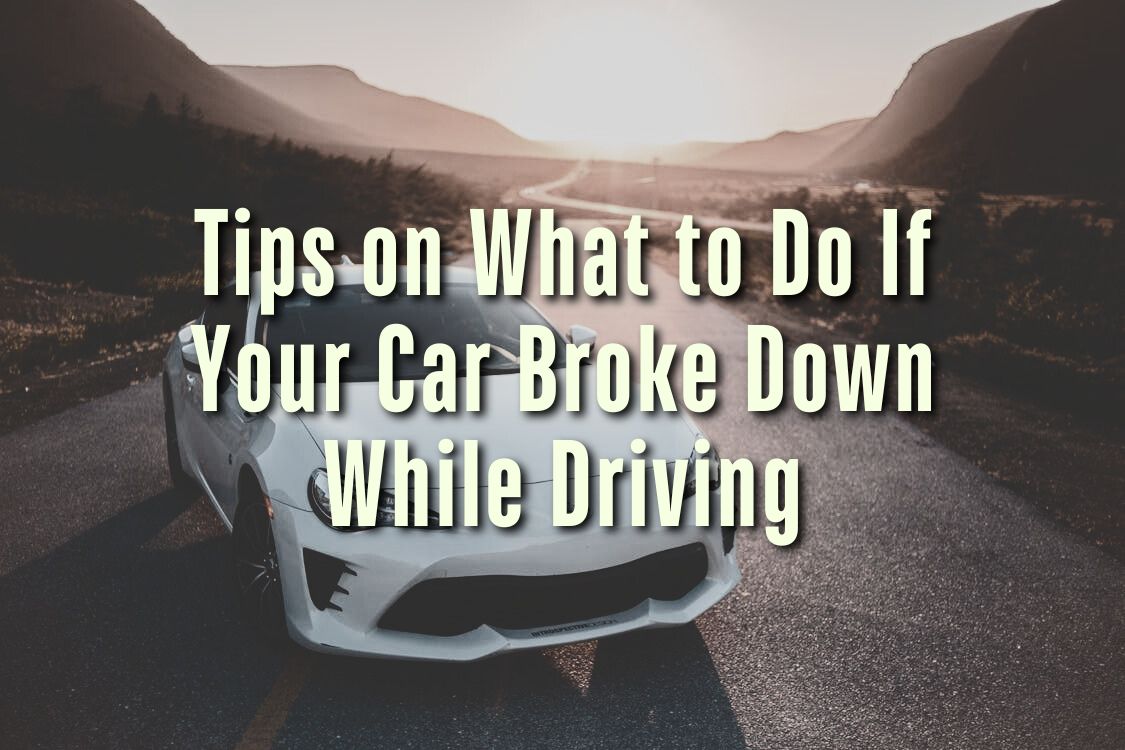
If you’re out on the road and your car suddenly breaks down, it can be a very stressful experience. However, there are certain steps you should take to ensure your safety as well as that of anyone else in the vehicle. Note that this can happen to newer modern cars as well.
Slow Down and Pull Off the Road
Try to park your car in a well-lit area and set up emergency warnings or reflective triangles or even flares if you have them. Once the vehicle and engine are stopped, check under the hood for any obvious mechanical issues like broken belts or hoses that need replacing.
And stay safe. If you don’t see any of these problems, use your cell phone to call a tow truck or roadside assistance service to get help with getting your car back on the road.
Make sure to provide all necessary information such as make, model, and exact location so they can send someone as quickly as possible. Ask for an estimated time of arrival before hiring a tow truck service.
Immediately Call Roadside Assistance
Making an immediate call to roadside assistance is the best course of action, as it ensures that help is dispatched promptly and minimizes the time you spend stranded on the side of the road.
Reputable roadside assistance services typically offer 24/7 support and are equipped to handle a wide range of vehicular issues, from flat tires, battery issues, and passenger side doors that need repairs, to mechanical malfunctions.
By contacting them, you’ll get the guidance and support you need despite all that is wrong, alleviating stress and reducing the likelihood of further damage to your vehicle.
Turn Your Wheels Away from the Road and Put on the Emergency Brake
Turning your wheels away from traffic on the road and engaging the emergency brake are two simple yet effective measures you can take to achieve this.
By angling your wheels away from the flow of traffic, you create a buffer that prevents your car from inadvertently rolling back onto the road, should the parking brake fail or be accidentally disengaged.
Applying the emergency brake adds an extra layer of security by locking the rear wheels, making it less likely for your vehicle to shift from its stationary position. These precautions not only protect your vehicle but also contribute to the overall safety of other drivers sharing the highway or road with you during a breakdown.
Stay with the Car
Do not attempt to flag down passing cars or try to walk along the busy highway in search of help. Find a safe place to gather your thoughts. This is dangerous and can put you at risk for further injury or even death. It’s best to stay with the car until help arrives safely, rather than putting yourself in an unsafe situation.
By remaining in or near your vehicle, you not only ensure your own safety but also make it easier for roadside assistance or emergency services to locate and assist you. Staying with your car also helps you stay safe and avoid potential hazards that may arise while walking along the roadside or attempting to flag down or call for help from passing motorists.
Steer Clear at the First Sign of Trouble
As a responsible driver, it is crucial to stay vigilant for any signs of trouble with your vehicle and act promptly to mitigate potential hazards. At the first indication of a problem, such as unusual noises, vibrations, or dashboard warning lights, it’s imperative to steer clear of traffic and avoid causing accidents.
By remaining calm and maintaining control of your vehicle, you can safely navigate to the side of the road, allowing you to assess the situation and determine the appropriate course of action.
Taking these proactive steps not only safeguards your well-being and that of your passengers but also helps drivers maintain the flow of traffic and travel lanes and reduce the risk of collisions. By promptly addressing any issues, you contribute to a safer driving environment for everyone on the road.
Turn on Your Hazard Lights
Turning on your hazard lights is a critical step in ensuring both your safety and that of other road users. These flashing amber lights serve as a universal distress signal, alerting nearby drivers of your presence and the potential hazard your immobilized vehicle poses.
By activating your hazard lights promptly, you give fellow motorists sufficient time to react and maneuver around your car, minimizing the risk of collisions or further incidents. Hazard lights also serve to attract the attention of passing tow trucks or emergency responders, who may be able to provide timely assistance.
Do Not Panic If Your Car Breaks Down
If you ever find yourself in a situation where your car is giving you trouble, like a flat tire, a sudden breakdown, or a brake failure, you might feel panicked and scared. You’re on a busy road and you don’t know how to get to a safe spot. But the most important thing is to stay calm.
Take deep breaths to help alleviate anxiety and keep your focus on the task at hand, whether it’s pulling off the right shoulder of the road, signaling for help, or contacting roadside assistance.
Remember, the more composed you are during a breakdown, the more effectively you can navigate the situation and ensure a safe and successful resolution.









